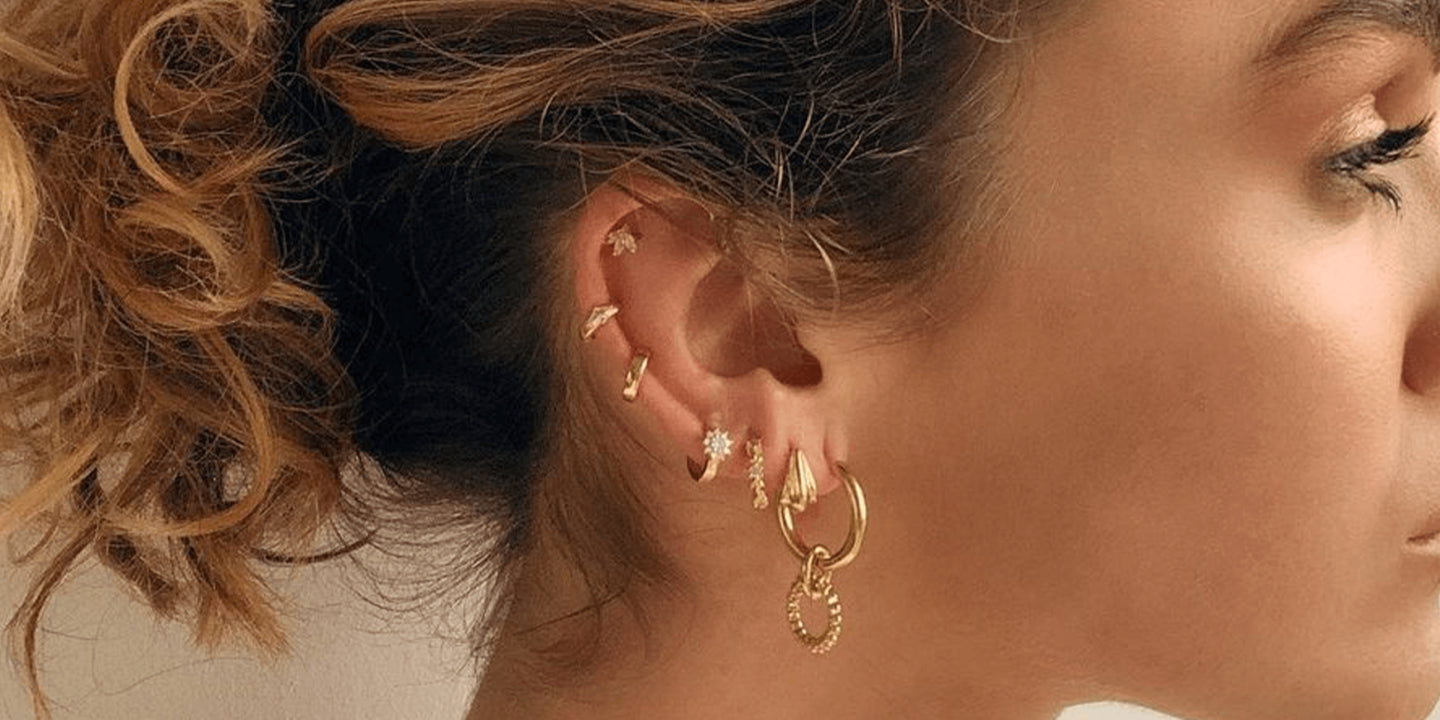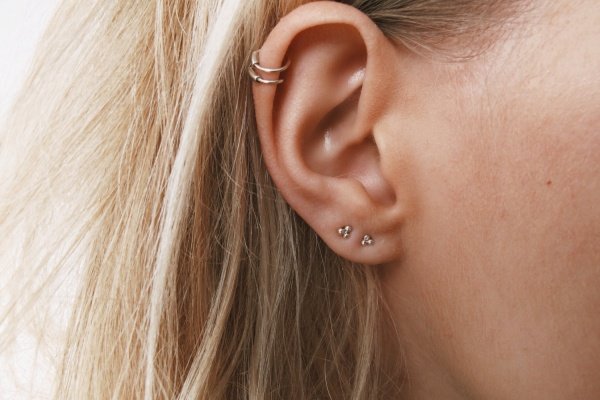Free shipping for USA orders over $65
Free shipping for USA orders over $65
Shop Jewelry
- 14K Gold Jewelry
- Sterling Silver Jewelry
- Titanium Jewelry
- Niobium Jewelry
- Belly Rings
- Cartilage Earrings
- Drop Earrings
- Eyebrow Rings
- Hoop Earrings
- Huggie Earrings
- Industrial Barbells
- Labret Studs | Flat back
- Lippy Loop Labret
- LGBTQ+ Pride Jewelry
- Nipple Jewelry
- Nose Jewelry
- Pregnancy Belly Ring
- Septum Jewelry
- Stud Earrings
- Tongue Barbells
- Fake Piercings
- Crescents / Pinchers
- Micro Barbell
- Dermals / Surface Barbells
- Toe Rings
- VCH Jewelry
- Belly Rings - Internally Threaded
- Body Jewelry Parts - Internally Threaded
- Captive Bead Ring - Internally Threaded
- Cartilage Barbells - Internally Threaded
- Curved Barbell - Internally Threaded
- Eyebrow Rings - Internally Threaded
- Horseshoe Circular Barbell - Internally Threaded
- Insertion Tapers - Internally Threaded
- Labret - Internally Threaded
- Nipple Jewelry - Internally Threaded
- Retainers - Internally Threaded
- Straight Barbell - Internally Threaded
- Tunnels - Internally Threaded
- 14K Gold Jewelry
- Sterling Silver Jewelry
- Titanium Jewelry
- Niobium Jewelry
- Belly Rings
- Cartilage Earrings
- Drop Earrings
- Eyebrow Rings
- Hoop Earrings
- Huggie Earrings
- Industrial Barbells
- Labret Studs | Flat back
- Lippy Loop Labret
- LGBTQ+ Pride Jewelry
- Nipple Jewelry
- Nose Jewelry
- Pregnancy Belly Ring
- Septum Jewelry
- Stud Earrings
- Tongue Barbells
- Fake Piercings
- Crescents / Pinchers
- Micro Barbell
- Dermals / Surface Barbells
- Toe Rings
- VCH Jewelry
- Belly Rings - Internally Threaded
- Body Jewelry Parts - Internally Threaded
- Captive Bead Ring - Internally Threaded
- Cartilage Barbells - Internally Threaded
- Curved Barbell - Internally Threaded
- Eyebrow Rings - Internally Threaded
- Horseshoe Circular Barbell - Internally Threaded
- Insertion Tapers - Internally Threaded
- Labret - Internally Threaded
- Nipple Jewelry - Internally Threaded
- Retainers - Internally Threaded
- Straight Barbell - Internally Threaded
- Tunnels - Internally Threaded
Bridge Piercing : A Unique and Eye-Catching Nose Piercing Option
6 min read

If you are looking for a unique and eye-catching way to adorn your nose, you might want to consider getting a bridge piercing. This type of piercing runs horizontally across the bridge of the nose, usually between the eyes or at the narrowest part of the nose. It is also known as an Erl piercing, after Erl van Aken, who is credited with popularizing it in the 1980s.
A bridge piercing is a surface piercing, meaning that it goes through the skin rather than the cartilage or bone. This makes it less painful than some other nose piercings, but also more prone to migration and rejection. Therefore, it is important to know what to expect before getting a bridge piercing, as well as how to take care of it properly.
In this article, we will cover everything you need to know about bridge piercings, including:
- The common sizes and jewelry types for bridge piercings
- The best material for initial bridge piercing jewelry
- The pros and cons of getting a bridge piercing
- The procedure and healing time for bridge piercings
- The aftercare and potential side effects of bridge piercings
- How to change your bridge piercing jewelry
- Some examples of suitable products for bridge piercings
What are the common sizes and jewelry types for bridge piercings?
The size of your bridge piercing will depend on your anatomy and preference, but generally speaking, most bridge piercings are done with a 16 gauge or 14 gauge needle. The length of the jewelry will also vary depending on the thickness of your skin and the placement of your piercing, but usually ranges from 5/16 inch to 3/8 inch.
The most common type of jewelry for bridge piercings is a straight or curved barbell with balls or discs on both ends. Some people also opt for circular barbells or captive bead rings, but these can be more visible and interfere with glasses or sunglasses. The ends of the jewelry should be small and flat to reduce pressure and irritation on the skin.
What is the best material for initial bridge piercing jewelry?
The material of your initial bridge piercing jewelry is very important, as it can affect how well your piercing heals and how likely it is to migrate or reject. The best material for initial bridge piercing jewelry is implant-grade titanium, as it is hypoallergenic, lightweight, and resistant to corrosion. Titanium also comes in different colors, so you can choose one that suits your style.
Other materials that are suitable for initial bridge piercing jewelry are implant-grade steel, niobium, or gold. These materials are also biocompatible and durable, but may be heavier or more expensive than titanium. You should avoid any materials that contain nickel, such as silver or stainless steel, as they can cause allergic reactions or infections.
What are the pros and cons of getting a bridge piercing?
Like any other type of piercing, getting a bridge piercing has its advantages and disadvantages. Here are some of the pros and cons of getting a bridge piercing:
Pros
- A bridge piercing can enhance your facial features and make your eyes stand out.
- A bridge piercing can be subtle or bold depending on the jewelry you choose.
- A bridge piercing can be easily hidden with makeup or bangs if needed.
- A bridge piercing does not affect your sense of smell or vision.
- A bridge piercing does not hurt as much as some other nose piercings.
Cons
- A bridge piercing has a high risk of migration and rejection due to its location on a flat surface with little flesh.
- A bridge piercing can leave visible scars if it migrates or rejects.
- A bridge piercing can be difficult to heal due to its exposure to dirt, sweat, makeup, and glasses.
- A bridge piercing can be infected by bacteria from your nose or sinuses.
- A bridge piercing can cause headaches or eye irritation in some people.
How is a bridge piercing done and how long does it take to heal?
A bridge piercing is done by a professional piercer who will first mark the entry and exit points of the needle on your nose. They will then use a sterilized needle to pierce through your skin and insert the jewelry. The whole process should take only a few minutes and cause minimal bleeding.
The healing time for a bridge piercing varies from person to person, but generally takes about 8 to 12 weeks. During this time, you should follow the aftercare instructions
given by your piercer, which usually include:
- Washing your hands before touching your piercing or jewelry
- Cleaning your piercing twice a day with saline solution or a gentle soap
- Drying your piercing gently with a clean paper towel or air drying
- Avoiding touching, twisting, or playing with your jewelry
- Avoiding makeup, creams, oils, or other products near your piercing
- Avoiding sleeping on your piercing or putting pressure on it
- Avoiding swimming, sauna, or steam rooms until your piercing is fully healed
- Changing your pillowcase and towels regularly to prevent infection
What are the potential side effects of bridge piercings?
Some of the common side effects of bridge piercings are:
- Swelling, redness, tenderness, or bruising around the piercing site
- Bleeding or discharge from the piercing
- Crustiness or scabbing around the jewelry
- Itching or irritation of the skin
- Sensitivity to light or eye strain
These side effects are usually normal and temporary, and should subside within a few days or weeks. However, if they persist or worsen, you should consult your piercer or a doctor as soon as possible.
Some of the signs of infection or other complications are:
- Severe pain, swelling, redness, or heat around the piercing
- Yellow, green, or foul-smelling pus from the piercing
- Fever, chills, nausea, or vomiting
- Jewelry moving or sinking into the skin
- Jewelry rejecting or migrating out of the skin
- Scarring or keloids around the piercing
If you notice any of these signs, you should seek medical attention immediately. Do not remove your jewelry unless instructed by a professional, as this can trap the infection inside and make it worse.
How do you change your bridge piercing jewelry?
You should not change your bridge piercing jewelry until your piercing is completely healed, which can take up to 12 weeks. Changing your jewelry too soon can cause trauma, infection, or rejection of your piercing.
When you are ready to change your jewelry, you should follow these steps:
- Wash your hands and your new jewelry with soap and water
- Unscrew one end of your old jewelry and carefully slide it out of your piercing
- Insert your new jewelry through the same hole and screw the end back on
- Clean your piercing and your old jewelry with saline solution
You can also ask your piercer to change your jewelry for you if you are not comfortable doing it yourself.
What are some examples of suitable products for bridge piercings?
There are many types of products that you can choose for your bridge piercings, depending on your style and preference. Some examples are:
- Titanium straight barbells with balls or discs in different colors and sizes
- Titanium curved barbells with balls or discs in different colors and sizes
- Titanium circular barbells with balls or discs in different colors and sizes
- Titanium captive bead rings with balls or gems in different colors and sizes
You can find these products and more at RebelBod.com , a website that offers high-quality body jewelry for all types of piercings. You can also browse their collections by body piercing types or body jewelry types to find what suits you best.
RebelBod.com have a wide range of jewelry types, sizes, colors, and designs to suit your preference and style. You can browse the collection of jewelry for nose bridge piercing here: https://rebelbod.com/collections/nose-bridge-piercing
You can also find more information on body piercing types here: https://rebelbod.com/collections/body-piercing-types
And more information on body jewelry types here: https://rebelbod.com/collections/body-jewelry-type
If you are looking for high-quality, affordable, and stylish jewelry for your piercing, you should check out RebelBod.com. RebelBod.com is an online store that specializes in body jewelry for all types of piercings. RebelBod.com have a wide range of jewelry types, sizes, materials, colors, and designs for your lobe piercing. Whether you want simple studs, fun hoops, cool rings, sleek barbells, bold plugs, or trendy tunnels, RebelBod.com has it all.
RebelBod.com offers jewelry that is made of hypoallergenic, non-porous, smooth, and easy to clean materials, such as titanium, surgical steel, gold, and glass. RebelBod.com also have jewelry that is made of acrylic, wood, stone, and silicone for healed piercing. RebelBod.com have jewelry that suits your skin tone, hair color, eye color, or outfit and jewelry that complements your personality and preferences.
RebelBod.com is your one-stop shop for all your body piercing jewelry needs. Visit RebelBod.com today and browse the amazing collection of jewelry for your body piercing!
Also in Body Piercing
Categories
Recent Articles
- Nose Ring vs Nose Stud: Which Nose Piercing Is Right for You?
- The Ultimate Guide on Hoop Earrings: Huggies, Wire Loop Earrings, Hinged Hoop Earrings, Fixed Bead, Rings Captive Bead, Rings
- Double Helix Piercing: How to Rock Two Hoops on Your Ear
- Double Ear Piercing: A Complete Guide - Everything You Need to Know
- Auricle Piercing : A Guide to This Stylish Cartilage Piercing
- Tragus Piercing: Everything You Need to Know About This Trendy Ear Piercing
- Ashley Piercing : Everything You Would Want To Know About This Unique And Stylish Lip Piercing
- Smiley Piercing: A Comprehensive Guide to This Oral Piercing
- Conch Piercing : Your Comprehensive Guide to A Beautiful Cartilage Ear Piercing
- Body Piercing Decisions : Considerations You Should Think About



